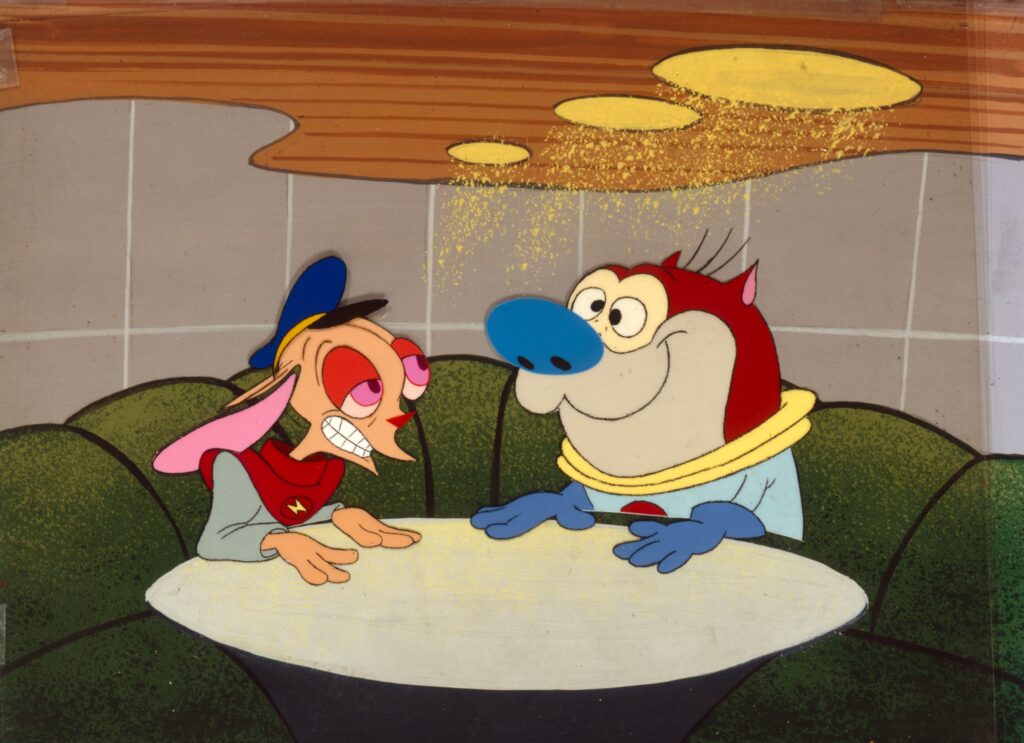1. Garfield (Garfield and Friends)

Garfield is the quintessential lazy, lasagna-loving cat whose sarcastic attitude and constant mocking of his owner Jon made him a household name. As a cartoon, Garfield’s exaggerated laziness and sarcastic dialogue made him a perfect fit for animation, where his human-like traits could shine.
2. Tom (Tom and Jerry)

Tom, the determined cat from Tom and Jerry, became an icon of slapstick humor. His relentless pursuit of Jerry led to over-the-top chases and comical violence, something only animation could pull off safely and humorously.
3. Felix the Cat (Felix the Cat)

Felix, one of the earliest cartoon characters, was a mischievous black cat whose magical bag of tricks made him a TV favorite. His silent yet expressive style and adventures in surreal, fantasy settings made Felix ideal for animation, where physical comedy and magical realism could flourish.
4. Sylvester (Looney Tunes)

Sylvester the Cat, famous for his never-ending attempts to catch Tweety Bird, is another perfect example of why animated cats work so well. His exaggerated expressions of frustration and repeated failures make him a cartoon classic that live-action just couldn’t replicate.
5. Top Cat (Top Cat)

Top Cat was a street-smart feline running a gang of alley cats in the city. His charm and scheming nature fit perfectly in the animated world, where his antics could be larger-than-life, with schemes that would be impossible for a real cat to pull off.
6. Scratchy (The Simpsons)

Scratchy, the cat in the ultra-violent Itchy and Scratchy show within The Simpsons, parodies slapstick cartoon violence. The over-the-top mayhem Scratchy endures, with no real consequences, is something only possible in animation—further proving that cartoon cats can handle what real cats cannot.
7. The Cat in the Hat (The Cat in the Hat)

Dr. Seuss’s The Cat in the Hat was brought to life through animation, where his quirky, rule-breaking nature could be exaggerated and whimsical. His magical, chaotic behavior is suited for the animated medium, where anything is possible.
8. Lion-O (ThunderCats)

Lion-O, the leader of the ThunderCats, is far from a regular housecat. As an animated warrior from a fantastical world, Lion-O’s heroic feats and battles are something that animation could explore fully, blending action and fantasy in a way real animals never could.
9. Snowball (The Simpsons)

Snowball, the often-overlooked family cat in The Simpsons, isn’t as expressive as some other cartoon cats, but her simple presence fits right into the animated world of Springfield. Snowball’s occasional cameos and odd moments of behavior are much easier to control in animation.
10. Cheshire Cat (Alice in Wonderland)

The Cheshire Cat from Alice in Wonderland is one of the most fantastical cartoon cats. His ability to disappear, hover in mid-air, and deliver cryptic, whimsical advice could only be achieved through animation, where the laws of reality don’t apply.
11. Heathcliff (Heathcliff and The Catillac Cats)

Heathcliff, a mischievous and streetwise orange cat, was a cartoon staple in the ’80s. His antics and larger-than-life personality made him a standout in animation, where his adventurous spirit could be taken to exaggerated levels, from stealing fish to leading a gang of cats.
12. Azrael (The Smurfs)

Azrael, Gargamel’s sidekick cat in The Smurfs, is another iconic animated feline. His expressions of frustration and exasperation as he helps his master chase Smurfs work perfectly in the animated world, where his personality can be stretched beyond the limits of a real cat.
13. Stimpy (The Ren & Stimpy Show)

Stimpy, the dim-witted, lovable cat from The Ren & Stimpy Show, became a cult favorite due to his bizarre behavior and offbeat humor. His exaggerated facial expressions and wild antics pushed the boundaries of animation, proving once again why cartoon cats reign supreme on TV.


